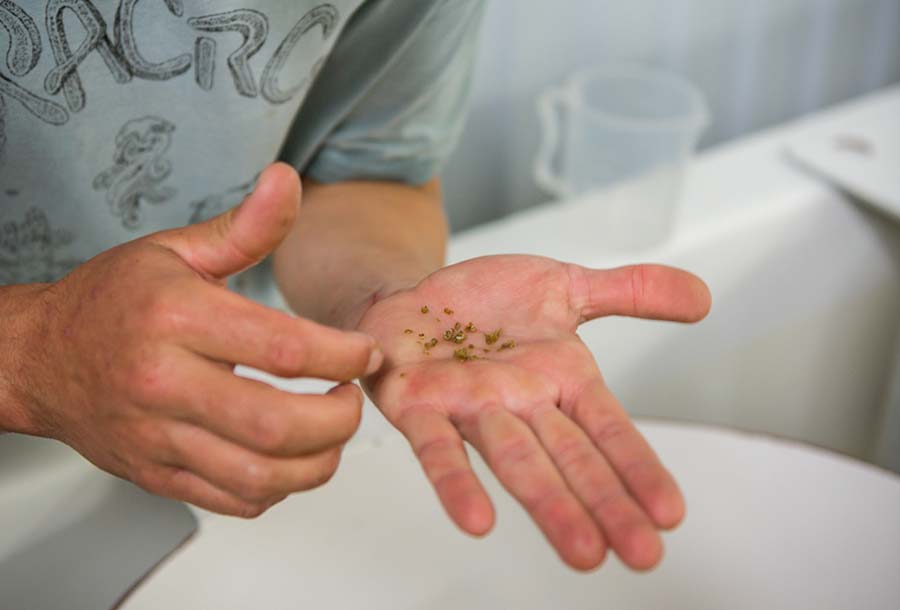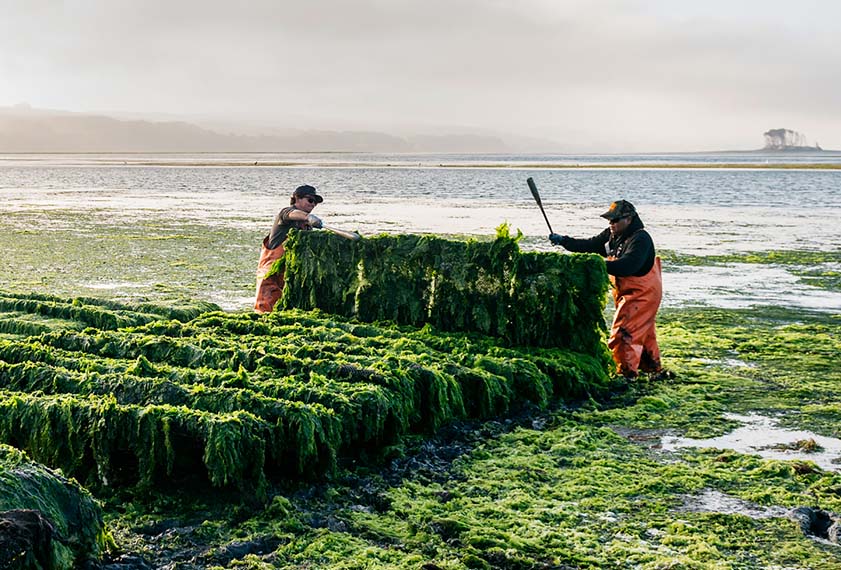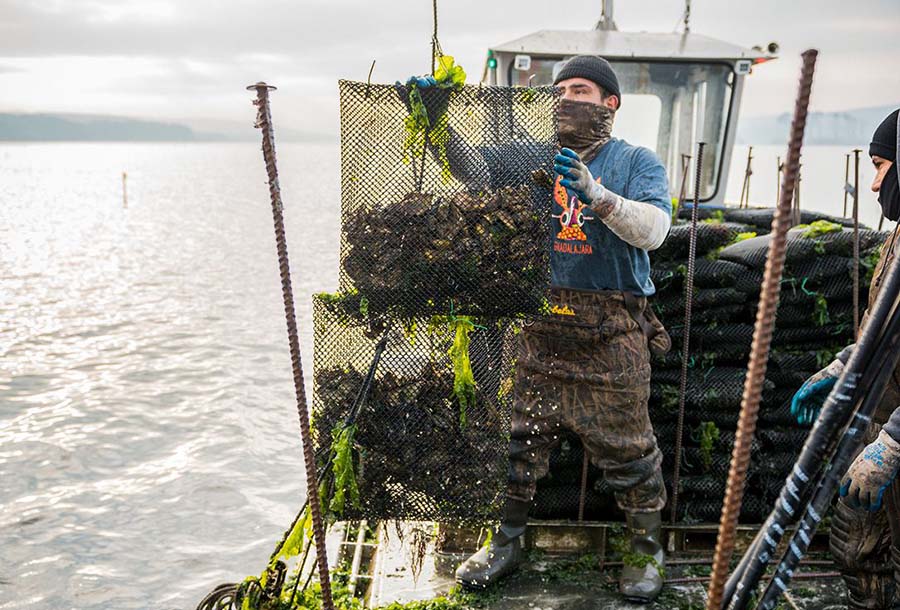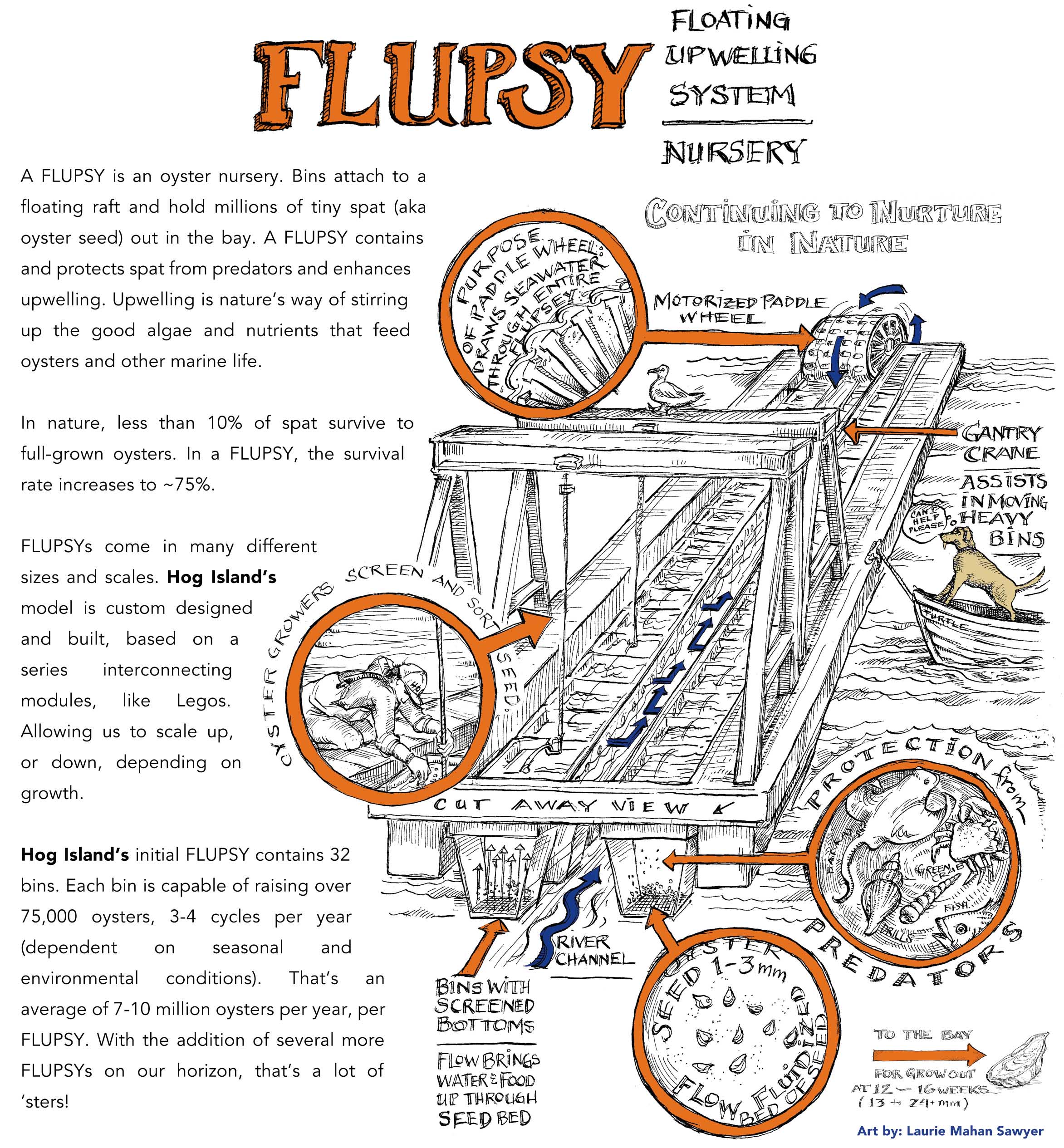All our Pacific and Kumamoto oysters start their journey at our Humboldt hatchery and nursery, where we raise them from seed. Once they’re big enough to survive in the bay, we move them to our Humboldt and Tomales Bay Farms, where they’ll take anywhere from twelve months to three years to grow to market size.
An Oyster’s Journey
From Seed—The Hatchery
Oyster farmers worldwide rely on an abundance of healthy, productive seed to keep shellfish farms and the aquaculture industry thriving and sustainable. Raising seed in a hatchery setting protects young oysters from predators and environmental stresses, greatly increasing their survival success when transferred out to the bay for grow out.


The Nursery
Hog Island Oyster’s nursery in Humboldt Bay is a custom-designed, state of the art FLUPSY (Floating Upweller System). When spat reach approximately 1-3 mm in size, they are transferred to our nursery, FLUPSY. A FLUPSY contains and protects young oysters and enhances the natural upwelling of nutrients and phytoplankton in the ecosystem that oysters feed on. Our nursery team tend to the oysters daily to monitor their health, condition, and growth.
Grow Out
When the oyster seed reaches approximately ¾ inch, they are transferred from FLUPSY to grow out leases in the bay. In Tomales Bay, our standard growing method is a ‘rack and bag’ system adapted from French aquaculture. Oysters are planted by the hundreds in reusable mesh bags fastened to rebar racks which elevate the oysters from the bay floor. Being elevated from the bay floor allows the best tidal flow to surround the shellfish so they can easily feast on natural phytoplankton and nutrients in the water column. Our oysters are raised in intertidal zones of the bay where they spend part of their lives out of the water, exposed to air. Depending on the species of oyster, they will spend anywhere from 12 months to three years here, filtering up to fifty gallons of seawater per day as they feed on natural minerals and nutrients provided by mother nature.


Tipping & Flipping
This is a term near and dear to most oyster farmers. While we do not feed or put any fertilizers in the water, farming single oysters is still a very hands-on practice. Our farm crew is out in the bay on a regular basis, literally flipping, shaking and tipping our bags of oysters to improve their shape and condition, which improves their overall quality. Flipping racks, which hold close to a thousand oysters per rack, is hard, physical work. The rewards are beautiful, high-quality oysters and a great ‘office’ environment.
Harvesting
Harvest days may begin at 4:00 am in the morning or 8:00 pm at night. It all depends on the tides. When the tides are just right (just above knee height), our crew hauls hundreds of bags of oysters deemed ready for market onto our harvest boat. The haul is moved from the boat to our farm where for the next several hours our crew hand sorts the shellfish for size, condition, and quality. Only the best oysters are bagged up for market, the rest are put back into the bay to continue to grow. It’s another labor-intensive, hands-on process, but one that ensures that only our best oysters head to market.


To Plate—Live Wet Storage
After the best oysters are bagged up for market, we treat them to a 24-hour soak in our seawater “oyster spa”. Designed by Hog Island co-founder, Terry Sawyer, (who was a marine aquarist in a former life), our live wet storage is a system of tanks designed to hold living oysters in a UV filtered, chilled seawater setting very similar to their natural surroundings. Think large aquariums.
Resting time in the tanks ensures every single Hog Island Oyster served to you is consistently fresh, clean, and of the highest quality.
